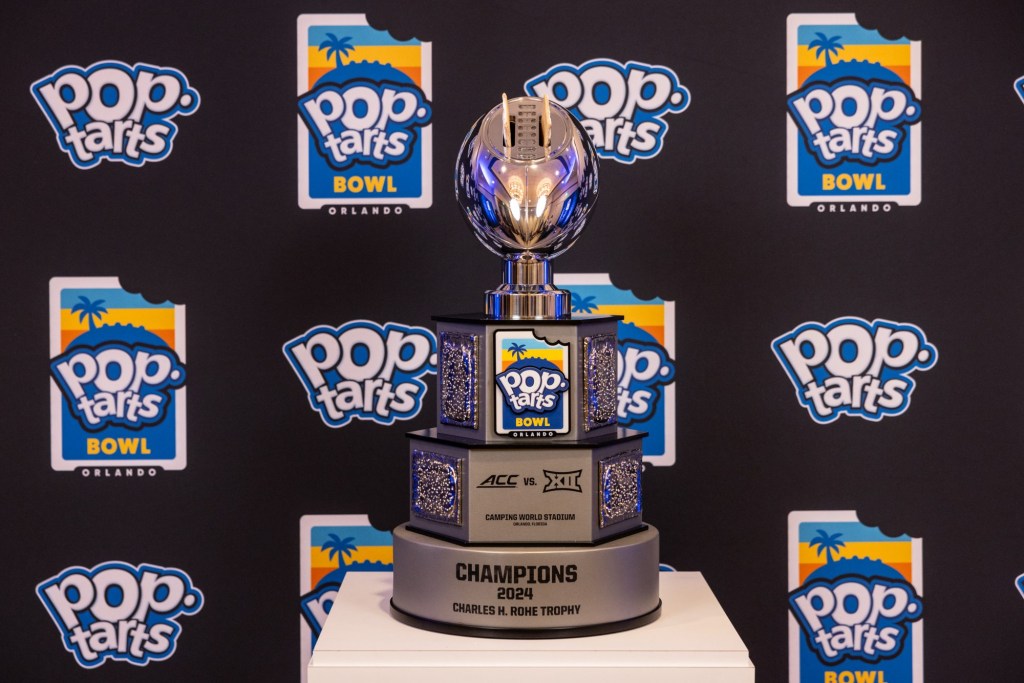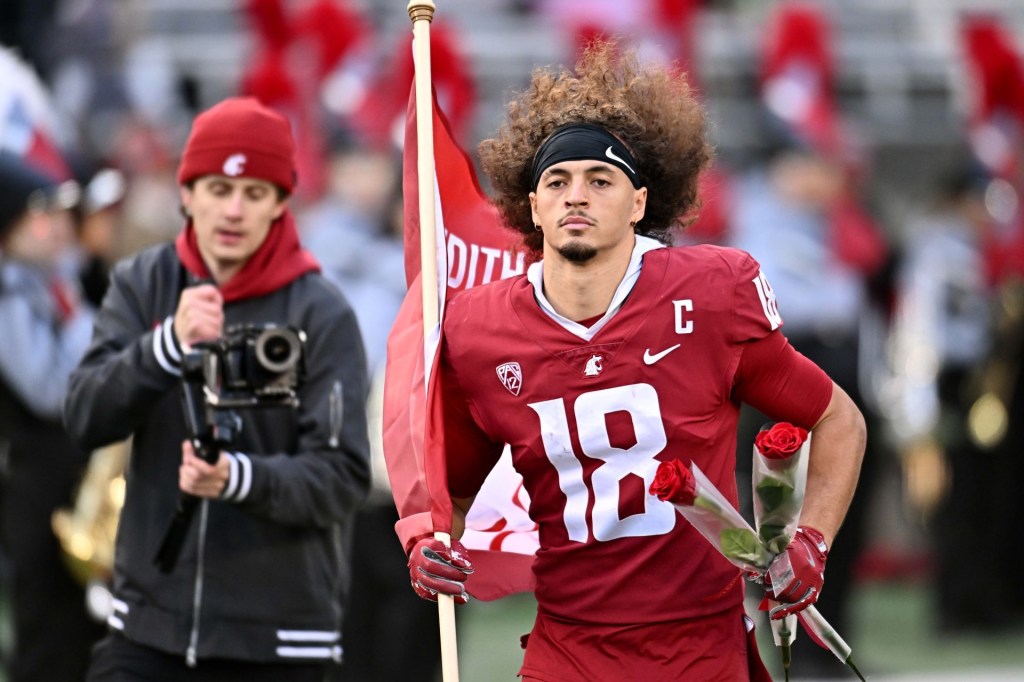The most recognizable moment of bowl season last year wasn’t an overtime win. It wasn’t a touchdown celebration. It wasn’t even a fluke play or missed field goal. It was a comedic ritual sacrifice of a breakfast pastry.
The Pop-Tarts Bowl was previously the Cheez-It Bowl; but in 2023, Kellanova, the parent company for both brands, rebranded the event. The inaugural December 2023 game in Florida went viral not for the game itself, but for the stunts that Pop-Tarts marketers, as well as those at Florida Citrus Sports, put together.
After Kansas State beat NC State 28–19, the Pop-Tarts mascot stood atop a giant toaster on the field holding a sign saying “dreams really do come true.” The mascot, an homage to the brand’s traditional frosted strawberry flavor, then disappeared into the toaster—and a giant Pop-Tart came out on the other side. Under confetti and cheers, players and coaches devoured the rectangular cake. The mascot was proclaimed the first-ever to be edible.
“They just rang the bell,” Florida Citrus Sports CEO Steve Hogan tells Front Office Sports. “Hit it out of the park.”
The clip was shared widely on social media and across news outlets. Fans turned photos of both the mascot atop the toaster and the eaten mascot into viral memes. As a result, the game generated $12.1 million in earned media value for Pop-Tarts, between TV, radio, social media, and digital news exposure, Apex Marketing Group calculated.
“You’re looking at north of a 25% bump in value [compared to last year’s game] because of this creative activation,” Eric Smallwood, Apex Marketing’s CEO, told Front Office Sports last year. “The execution from Pop-Tarts really elevated the conversation.”

Of the dozens of bowl games, the Pop-Tarts Bowl was one of only nine that topped 3 million viewers, according to ESPN, averaging 4.3 million viewers. Pop-Tarts brand manager Alex Sotiropoulos said at the Sports Business Journal conference that in the eight weeks following the game, the brand sold 21 million more Pop-Tarts than it did in the eight weeks prior.
Now in its second year, the Dec. 28 event—which will receive national treatment on ABC—will include even bigger stunts. If Pop-Tarts can pull out even a fraction of last year’s success, it’ll once again position itself to find viral victory this postseason.
The Pop-Tarts Bowl could even become a blueprint for how bowl games can remain relevant despite multiple changes to the college football landscape—from the transfer portal and player opt-outs to the expanded CFP that threatens the popularity of bowl season altogether.
Organizers have already been making moves to build on last year’s success leading up to Dec. 28, when Iowa State takes on Miami at Camping World Stadium in Orlando.
Throughout the past several months, Florida Citrus Sports and Pop-Tarts have slowly rolled out several elements leading up to this year’s Pop-Tarts Bowl—all of which have enjoyed similar virality. They even cut through the noise of the relentless CFP bracket conversations, which were even louder this year due to the new 12-team field.
In September, the bowl game kept itself in the college football conversation through selling Pop-Tarts mascot Halloween costumes. Two months later, the organizers announced the game would have not one, but three mascots, all representing different flavors: Hot Fudge Sundae, Frosted Wild Berry, and one previously discontinued mystery flavor (since revealed to be Frosted Cinnamon Roll). The game’s MVP will choose which mascot they get to eat.

Then, in mid-December, organizers unveiled the trophy: an actual working toaster, made in partnership with GE Appliances. In addition to a filmed video of the unveiling, the event put out a video on social media that was a spoof on the Oscar-winning film Oppenheimer, likening the creation of the trophy to The Manhattan Project (which created the atomic bomb).
Hogan says he was the most excited about the trophy reveal of all the announcements so far. “You’re like, yeah, sounds great,” Hogan says of these creative marketing ideas. “And all of a sudden it’s game week—and you’re sitting at your desk in a quiet moment going, ‘How do we do this?’”
Ever since the 12-team Playoff (which includes the New Year’s Six bowl games in its structure) was announced, industry experts have wondered whether bowl games not involved in the event would go extinct. Because bowl games are glorified exhibitions, players have begun increasingly opting out of the games to avoid injuries, or because they’ve entered the transfer portal.
But Hogan isn’t concerned that bowl games are in danger of fading altogether—he notes that even the less popular games garner millions of viewers, and that the tradition and pageantry of the games keeps them relevant, even without the gimmicks.
But between the successful pregame hype and the numbers from last year, it’s clear that Pop-Tarts has created a recipe for bowl game success, even in the 12-team CFP era. For Hogan, that recipe is: create a positive experience for players, and generate revenue.
“People are talking about, ‘Ah, I want to be in that game,” he says of conversations with players. “‘I want to play in that game.’”


















